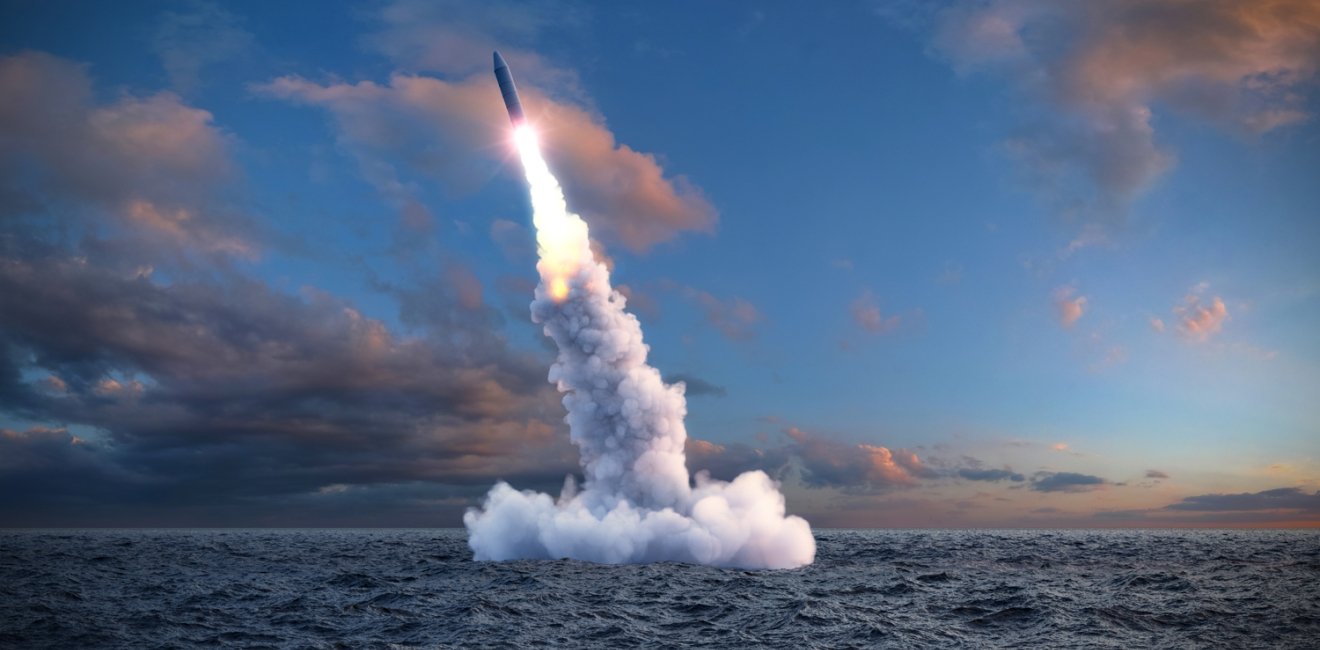The U.S. Can’t Get Rid of North Korea’s Nukes Without Paying a Catastrophic Price
Can the world live with a nuclear North Korea? Yes, for a time. But not without significant danger.
Can the world live with a nuclear North Korea? Yes, for a time. But not without significant danger.

Kim Jong Un is on a roll. After firing a second missile over Japan, successfully testing an intercontinental ballistic missile (ICBM), and successfully detonating a larger-yield nuclear weapon, the North Korean threat has grown significantly more dire in just a few weeks. General John Hyten, who commands U.S. Strategic Command, recently stated that he assumes that North Korea has successfully tested a hydrogen bomb. He also explained that while North Korea has yet to demonstrate a reliable ICBM that could deliver a nuclear warhead, “it’s just a matter of when, not if.” What happens next will profoundly influence the future of the Asia-Pacific for decades to come.
Unfortunately, with each North Korean success, America’s prospects of preventing North Korea’s further nuclearization grow dimmer. Economic sanctions and diplomatic isolation can and should be intensified, but China’s willingness to implement severe sanctions against North Korea is uncertain at best. Moreover, Pyongyang has for decades demonstrated its willingness to bear incredible poverty and isolation as the price of a credible nuclear capability.
Many outside analysts have speculated that encouraging regime change from within North Korea may be the most viable way out of this conundrum. Of course, as seen several years ago in the Arab Spring, even the most robust-seeming regimes may suddenly collapse, given the right circumstances. Regrettably, Kim Jong Un’s recent successes — getting closer to fulfilling the decades-old dreams of his father and grandfather — have likely strengthened his own domestic legitimacy, and diminished the chances that North Korean elites may choose to depose him.
Finally, preventative war is highly unattractive for the United States and its allies, because of North Korea’s ability to kill potentially millions of South Koreans, Japanese, and Americans. While the United States would ultimately be successful in a conflict with North Korea, in all likelihood that victory would come at a horrendous cost. Pyongyang knows this and does everything it can to emphasize the costs of war, which means that threats to attack North Korea therefore are likely to ring somewhat hollow to Pyongyang. This fundamentally undermines every attempt to negotiate with North Korea, as it severely diminishes U.S. leverage over what Pyongyang values most — its own survival.
Given the remarkable pace of successes North Korea has seen in recent days and weeks, and the inability of the United States and the rest of the international community to convince Pyongyang to choose a different path, the implication is clear: The United States will likely have to live with a nuclear North Korea. This does not mean we should accept it. Nor does this mean we should abandon efforts to convince North Korea to give up nuclear weapons. But it does mean that the United States should recognize the reality it faces: These capabilities are real, and it cannot get rid of them without paying a catastrophic price.
Can the world live with a nuclear North Korea? Yes, for a time. But not without significant danger. Despite the words of H.R. McMaster, President Donald Trump’s national security adviser, North Korea can be deterred — at least at the nuclear level. Kim Jong Un is not suicidal. In fact, the need to survive and preserve his regime seems to be the primary impulse behind North Korea’s nuclear and missile programs. The American nuclear deterrent remains robust, and the addition of a North Korean nuclear capability is not likely to change that dynamic. Both Russia and China have maintained the ability to strike the United States for decades, and nuclear deterrence has held. There is no reason to believe that North Korea would be any different in this regard.
Yet the same cannot be said of a potential conventional conflict on the Korean Peninsula. For 64 years, the combined might of the U.S. and South Korean militaries, including the American nuclear umbrella, have prevented a general conflict from breaking out again on the Korean Peninsula. The introduction of a North Korean nuclear weapon fundamentally and dangerously changes this dynamic.
If North Korea’s leaders feel safe behind their own nuclear deterrent, they may be emboldened to lash out against their adversaries. Recall the events of 2010, when North Korea first sank a South Korean military ship and then fired artillery at a South Korean island, killing a combined 50 South Koreans. Such dangerous provocations, and worse, may become more common in a world with a North Korean nuclear weapon.
Can the world live with a nuclear North Korea? Yes, for a time. But not without significant danger.
A nuclear North Korea may also pose a significant proliferation threat, especially as more drastic economic sanctions take their toll. Other rogue regimes and terrorist organizations could be willing to pay top dollar for North Korean material and know-how. For a regime whose only ideology is survival and isolation, dealing with terrorists and other zealots would pose no ethical problem.
These are the primary challenges that living with a nuclear North Korea will pose. Can they be addressed? To a degree, yes. The United States can work with its South Korean and Japanese allies to buttress their military posture in and around the Korean Peninsula in order to strengthen their ability to deter and defend against future North Korean provocations. The United States could also build an international coalition to contain the North Korean proliferation threat, and let it be known that proliferation would come at a terrible price.
Yet such efforts will not be sufficient in the long run. The combined dangers of North Korean aggression and proliferation are simply too great to accept into perpetuity. Over time, the United States will have to substantially change the fundamentals of this challenge if it hopes to achieve North Korea’s eventual denuclearization. While this strategy could involve negotiations with North Korea to limit, monitor, and eventually do away with its nuclear capabilities, the United States should pursue a strategy that reinvigorates a preventive attack as a more acceptable option.
Building toward prevention will require significant investments by the United States and its allies that enhance defense and deterrence, but more broadly it will require us to reorient our posture toward capabilities that what would be needed for preventive attack — a combination of offensive and defensive capabilities that would be several orders of magnitude beyond what is presently deployed to the Korean Peninsula and the immediate vicinity. It would also require substantially increasing investments in missile defense capabilities and technologies in order to deny North Korea’s ability to successfully strike the United States. Such a force would not only give the American president more viable options; it would imbue American negotiators with more leverage when they sit down with North Korean counterparts.
China will certainly object to a major buildup of American military power, and that of its allies, in its neighborhood. China’s objection to the deployment of a Terminal High Altitude Area Defense missile battery to South Korea has been substantial, and a greater U.S. military buildup would be far larger and more problematic for Beijing. Yet American leaders could explain that this is the price to be paid for decades of Chinese excuses, denial, and unrealistic pleas for restraint. Unfortunately, Beijing is likely to be far more effectively motivated by the threat of a major buildup of American military power than by the threat of a North Korean nuclear weapon.
In international politics, leaders are often forced to deal with problems not of their making. Trump did not create the North Korean nuclear issue, but it is now his responsibility. Denying that the problem exists, or pursuing a strategy that has little to no hope of success, only damages the security of the United States and those of its allies. Unfortunately, we must recognize the reality we face and put in place a strategy that hopefully secures a less dangerous future for generations to come.
This article originally appeared in ForeignPolicy.


The Indo-Pacific Program promotes policy debate and intellectual discussions on US interests in the Asia-Pacific as well as political, economic, security, and social issues relating to the world’s most populous and economically dynamic region. Read more


The Center for Korean History and Public Policy was established in 2015 with the generous support of the Hyundai Motor Company and the Korea Foundation to provide a coherent, long-term platform for improving historical understanding of Korea and informing the public policy debate on the Korean peninsula in the United States and beyond. Read more


The Kissinger Institute works to ensure that China policy serves American long-term interests and is founded in understanding of historical and cultural factors in bilateral relations and in accurate assessment of the aspirations of China’s government and people. Read more


